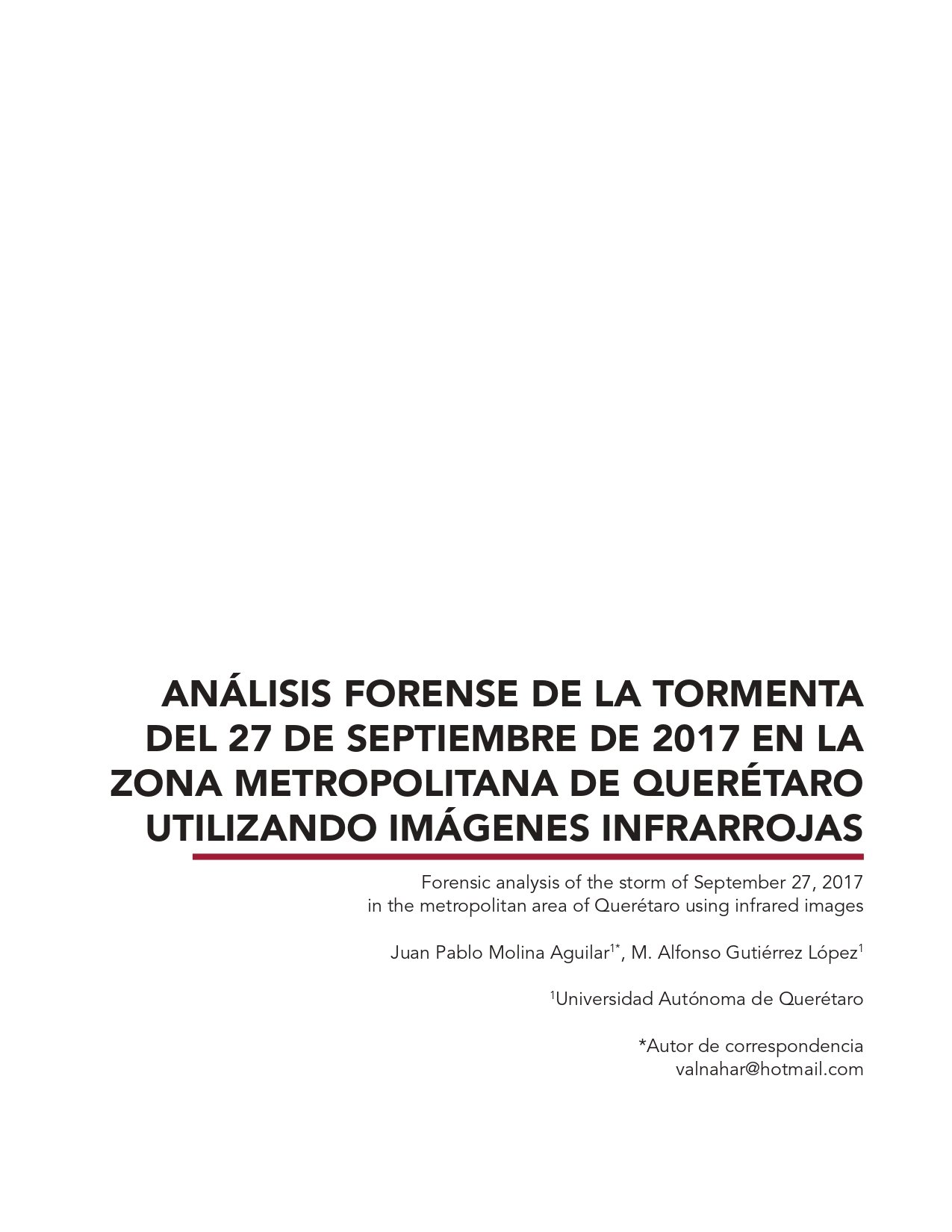Abstract
In recent years the queretana society has been affected repeatedly during the rainy season due to the presence of extreme hydrometeorological phenomena. The present work analyzes what happened in the state territory due to the storm of September 27, 2017 that gave rise to important affectations. The reading of the digital level in pixels referenced with the geographical position of the automatic meteorological stations in infrared images allowed us to forecast the intensity of rainfall using the Hydrostatimator technique, elaborating evolution maps using the Kriging technique. As a result, precipitation was determined in areas without instrumentation and it was observed that the storm presented a uniform spatial development, while in its temporal evolution there are two clear stages of rainfall intensification, in the metropolitan area as well as in the center and northeast of the state territory. It is concluded based on the analysis of the rainfall determined by the Hydroestimator based on the reading of infrared images that the previous rainfall decreased the infiltration capacity due to the saturation of the soil, the runoff coefficients were increased, significantly increasing the water volumes produced by the surface runoff in the areas affected by the storm, collapsing the hydrological network and the storm drainage system.

This work is licensed under a Creative Commons Attribution-NonCommercial 4.0 International License.

